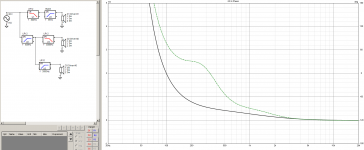Very interesting. I wonder if there was in fact a productiom anomaly with the drivers I had. Distortion measuremnts can be a bit misleading sometimes though. I'm not saying your measurements are flawed, just that there are so many things which can affect HD measurements, making them hard to quantify when comparing them to others.90db / 1 m
Here's the review link to the new 3" Bliesma domes. The Be version looks very promising. It does have a sharp spike in 5th order HD at 3 k and a bump can be seen in the impedance response. Could be a deal breaker.
https://hificompass.com/en/reviews/bliesma-m74a-6-m74b-6-m74p-6-and-m74s-6
https://hificompass.com/en/reviews/bliesma-m74a-6-m74b-6-m74p-6-and-m74s-6
If you look at the HD measurement made by Hifi Compass, it shows a somewhat different trend in HD. Look at 3rd and 5th HD @ around 1 k.

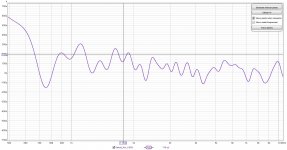
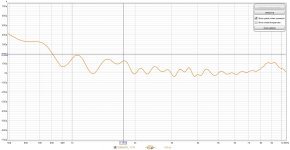
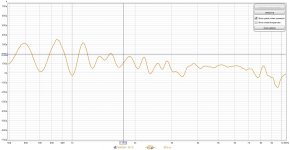
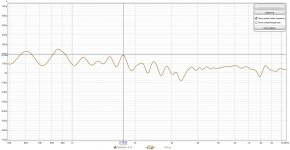
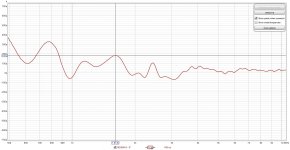
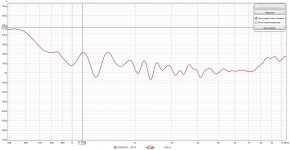
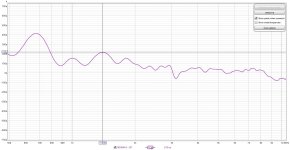
ok, last batch with some repeats and a bonus measurement. I forgot the $$$ dynaudio in the last set. As a bonus, I measured a broken yamaha ja-0801 that i tossed in.
Now all of these manufacturers can make these drivers do what they will. I wonder if both the drivers that have lags at 1.1khz off-axis is on purpose.
The Dynaudio folks can prob. make a driver do what they want too and off-axis the m560da lags as the third-worst of the bunch. Maybe to integrate to a woofer? I dunno. The 30 degree made it fall off my list.
...
Cool! You are the dome king!The Visaton DSM50 is a nice mid dome and has a very detailed neutral sound.
This is one of my top pics and even more after your review. My only worry is a couple of reports of them not being consistent at making drivers.
Yeah, I am not interested. Unless the "Energy-Time Curve" on hificompass has a bunch of mud from the high resonance then I pass.The Be version looks very promising.
I might just buy one md60n and a DSM50. I'm still on the fence and some sims will help.I wonder if there was in fact a production anomaly
Be side note:
Yeah, I agree about the Be Bliesma dome. It isn't as clean as it should be. The problem with larger domes is how the motor is vented to the rear and how well the rear opening of the diaphragm is vented and dampened.
The consistency issues with the DSM50 were not an issue in my measurements and the units i had were pretty close to each other. The driver is made in China and while that isn't necessarily a death sentence regarding quality, it has some affects in QC because the workers tend to be lower skilled, paid less and not interested the products they make. Thats not a recipe for a consistent product - note I used the word consistent and thats important in speakers.
I'm curious now too about the MD60-N and may try another set. Yes, I'm a mid dome fanatic. I've tried them all and the really good ones are no longer made. Very few cone drivers can'deliver the upper midrange clarity and detail a dome can and be crossed higher out of the critical 1k to 5k vocal range. A crossover point in this range always dilutes the speaker's vocal clarity, especially one with steep slopes.
The consistency issues with the DSM50 were not an issue in my measurements and the units i had were pretty close to each other. The driver is made in China and while that isn't necessarily a death sentence regarding quality, it has some affects in QC because the workers tend to be lower skilled, paid less and not interested the products they make. Thats not a recipe for a consistent product - note I used the word consistent and thats important in speakers.
I'm curious now too about the MD60-N and may try another set. Yes, I'm a mid dome fanatic. I've tried them all and the really good ones are no longer made. Very few cone drivers can'deliver the upper midrange clarity and detail a dome can and be crossed higher out of the critical 1k to 5k vocal range. A crossover point in this range always dilutes the speaker's vocal clarity, especially one with steep slopes.
I'm curious if you notice a change.I'm curious now too about the MD60-N and may try another set.
..
As far as a sim of the sd, the md60n and sdm50 look the same. At 60 degrees the dsm50 has a little more power.
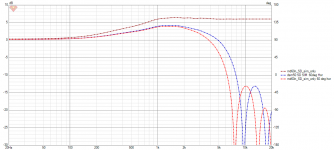
A comparison using the baffle sim with some data loaded in.
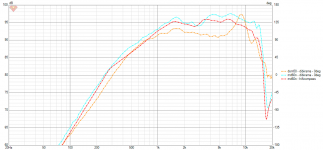
Some new XO's (mostly based on the last round) for the dsm50.
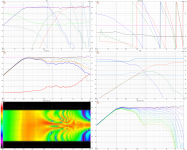
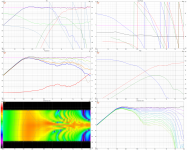
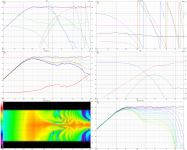
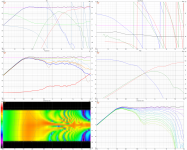
Some of these might not be possible. I think I might like how a 3" integrates more. I'd like the woofer to play less into 1khz.
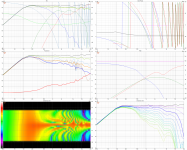
Why have I never used the optimizer in vcad before? This is what the optomizer did with my 1st order xo for the md60n; the optimizer was set to get a nice pref. score.. The TM are 385mm apart c-to-c. The woofer 114mm back. I don't know how I feel about the tweeter playing so low but I guess if you were on-axis with the tweeter you would want the mid playing slightly louder. Other than my minor gripes, I think it looks cool.
@profiguy ever mess with the scan speak 12MU or do you just rock domes?
The Bliesma T34B is very efficient and if it can play very well down to 1.5kHz what is the appeal of a dome mid compared to a cone with a LR4 xo at 1.5kHz? At -6dB at 1.5kHz, isn't that meaningfully lower than the upper midrange? 1.5kHz might work with a 6.5" mid driver, as in the pattern is still wide, and there are some that have fairly high efficiency.
@HeadShake The 12MU is a nice driver with an excellent motor, but the cone profile is less than optimal for off axis response. I actually prefer the NE123W to the 12MU because of the cone composition and plus its alot less money. The cone is still very deep with similar issues of the 12MU, but you're getting a Ti VC former and lots of copper in the motor in addition to a high Qms and decent BL with low Le. The entire NE family of drivers is excellent. I'm more of a 4 way guy myself which let's me split the LF very low 1st order into a separate mid bass driver for superior vocals and speedy midbass. I believe we also hear with our bodies and the visceral aspect of sound is just as important. This is of course more for the purpose of listening loud, so it probably doesn't apply to your scenario.
I really like lots of Sd down low to keep LF distortion very low. A cone mid really helps to keep the mid HP low and allow the use of a large LF driver. The goal is not to have a significant and sudden phase shift in the vocal band. If I have to use a cone mid driver, it has to be reasonably flat to at least past 4 k, so the xover points are out of the critical vocal range. A larger dome mid is usually very good past that range of 2 octaves and that means clearer vocals. I really don't like the sound of a 2 way crossing in the 1.5 - 2k area as it really screws up the vocals. The exception to this is using a large diameter tweeter in a WG to allow smoother transition from the LF driver.
I really like lots of Sd down low to keep LF distortion very low. A cone mid really helps to keep the mid HP low and allow the use of a large LF driver. The goal is not to have a significant and sudden phase shift in the vocal band. If I have to use a cone mid driver, it has to be reasonably flat to at least past 4 k, so the xover points are out of the critical vocal range. A larger dome mid is usually very good past that range of 2 octaves and that means clearer vocals. I really don't like the sound of a 2 way crossing in the 1.5 - 2k area as it really screws up the vocals. The exception to this is using a large diameter tweeter in a WG to allow smoother transition from the LF driver.
First, I am new at this and will do odd things so thanks for asking. I will try an LR4 sim with a cone.The Bliesma T34B is very efficient and if it can play very well down to 1.5kHz what is the appeal of a dome mid compared to a cone with a LR4 xo at 1.5kHz? At -6dB at 1.5kHz, isn't that meaningfully lower than the upper midrange? 1.5kHz might work with a 6.5" mid driver, as in the pattern is still wide, and there are some that have fairly high efficiency
I am interested in the GD added by XO's and the drivers. That last XO is all 1st order slopes and should have the least amount of GD of any other XO I make. So it is my extreme "best case". Also, without a WG it is hard to get a nice directivity between 500hz and 2khz. But really an LR4 should not add anything audible unless the driver has issues at the same spot.
profiguy put it best: "The goal is not to have a significant and sudden phase shift in the vocal band." Ditto for me and I would define a shift as:
This table is showing the limits of GD sensitivity for different sounds at diff. frequencies (the link to the paper is a couple of posts back). The data is the showing the level of GD in ms in the positive or negative. In brackets are the min and max of the testing group.
If it is possible for this project I'd prefer to keep all of my GD shifts somewhere between the "pink impulse" AVG GD or the MIN GD for the castanet test sample. It really should not be too hard but so many drivers have 0.5ms shifts in places. Put an XO on top of that and now I just broke the GD I would like. This is a bit of overkill for musical sounds (as the table shows) but I would like to see what I can make.
Thanks for the review of the 12MU and the driver suggestion. I will look into it!I'm more of a 4 way
The NE180W-08 is an amazing 7" driver to almost 1k. Its also just shy of 90 dB/W and can play very low at minimal THD. I would suggest it as both a mid bass and a dedicated woofer. Probably the best mid bass for under 200 period. The18W SS slit cone revelator doesn't come close to it IMO.
There's less overlap with LR4, I think most of the time that would be considered an advantage. LR2 has half the group delay (and inverted polarity for one band) but it's probably not workable at 1.5kHz, the tweeter wouldn't have much attenuation below 1kHz when equalized to an LR2 response. I guess more like 3kHz which would result in even lower GD (mostly because of the higher LPF of the mid driver) but I guess the issue of not quite enough attenuation below 1kHz could possibly reappear for a dome mid as well so that a cone would have to come into play maybe as high as 1kHz.
Below is a screenshot of the GD curve of 3-way configuration with LR2 crossovers (although I think 800Hz LR2 for a dome mid would be unrealistically low?) compared to a 3-way with all LR4, which is the green curve, and has different xo frequencies, 300Hz and 1.5kHz. (I think the bump in the curve at 250Hz could be ignored because the FR isn't flat there and haven't played around to flatten it.) In this example the GD of LR4 at 1kHz is 0.5ms, at 2kHz 0.2ms, and at 3kHz it's identical to LR2.
Below is a screenshot of the GD curve of 3-way configuration with LR2 crossovers (although I think 800Hz LR2 for a dome mid would be unrealistically low?) compared to a 3-way with all LR4, which is the green curve, and has different xo frequencies, 300Hz and 1.5kHz. (I think the bump in the curve at 250Hz could be ignored because the FR isn't flat there and haven't played around to flatten it.) In this example the GD of LR4 at 1kHz is 0.5ms, at 2kHz 0.2ms, and at 3kHz it's identical to LR2.
Attachments
It is very interesting to me that most people who experiment with a variety of drivers eventually discover that they all have a unique sound... a sound that transcends (or goes beyond) the system and crossover in which they are used. I have found this myself. We seem to be hearing differences that can't be easily explained by frequency response, dispersion, harmonic distortion, or other quantitative measurements. So what are we hearing? I do not know, and I do not have a good theory...
I think that is why we like to look at CSD waterfall curves, TES waterfall curves, step responses, ect... assessing these curves is essentially a qualitative assessment, not quantitative. We can draw subjective conclusions from the curves and make connections to our subjective listening impressions. Perhaps the answer does lie within those plots. But it is also possible it lies elsewhere.
Have you taken note of this research? https://www.audiosciencereview.com/...-re-loudspeaker-performance.11111/post-314268
If I understood your premises correctly (driver individual sound cannot be explained by [the usual set of parameters]), the research presented speaks against your assumption. But if we turn this around and leave the premises aside, the results would also tell us most of the times a residue of the fingerprint of a certain driver is left in our system sound, because we would not as strictly linearize them as in the study.
There are measurements and waterfall plots of the mid domes and the 12MU here: https://dibirama.altervista.org/le-prove/mid-range.html
Staying with the 1.5kHz xo example, just eyeballing the waterfall plots, the B&C 5MDN38 seems to stack up fine with the others mentioned above, up to 1.5kHz. Another driver that comes to mind, but with flatter cone/surround (or at least no thick gasket ring) and arguably easier TS parameters is the BMS 5S117. At 300Hz a 12' and a 5" could be within 1/4 wavelength which is probably nice to have.
Staying with the 1.5kHz xo example, just eyeballing the waterfall plots, the B&C 5MDN38 seems to stack up fine with the others mentioned above, up to 1.5kHz. Another driver that comes to mind, but with flatter cone/surround (or at least no thick gasket ring) and arguably easier TS parameters is the BMS 5S117. At 300Hz a 12' and a 5" could be within 1/4 wavelength which is probably nice to have.
So they removed the sound of the room in the way of the off-axis sounds plus changed the GD to match. That is a lot of slicing and dicing. So all drivers are the same if you remove all the things that make them unavoidably unique? I don't see what it proves other than we can manipulate drives into being similar on-axis? The problem is I hear the room and drivers perform differently off-axis.Have you taken note of this research? https://www.audiosciencereview.com/...-re-loudspeaker-performance.11111/post-314268
If I understood your premises correctly (driver individual sound cannot be explained by [the usual set of parameters]), the research presented speaks against your assumption. But if we turn this around and leave the premises aside, the results would also tell us most of the times a residue of the fingerprint of a certain driver is left in our system sound, because we would not as strictly linearize them as in the study.
Even the GD measurements I posted show many drives behave in a similar manner on-axis but once you go off-axis **** falls apart.
I'll give it a look. Thanks for the help.The NE180W-08 is an amazing 7" driver to almost 1k. Its also just shy of 90 dB/W and can play very low at minimal THD. I would suggest it as both a mid bass and a dedicated woofer. Probably the best mid bass for under 200 period. The18W SS slit cone revelator doesn't come close to it IMO.
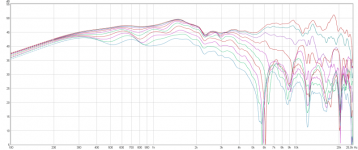
Found this 0-90 degree for the ne123w posted by a forum member. It looks like it has a bit of a GD shift around 700hz. No way of knowing for sure though. I do like the MMS and the price. I don't mind paying more for performance though.
Good points.There's less overlap with LR4, I think most of the time that would be considered an advantage. LR2 has half the group delay (and inverted polarity for one band) but it's probably not workable at 1.5kHz, the tweeter wouldn't have much attenuation below 1kHz when equalized to an LR2 response. I guess more like 3kHz which would result in even lower GD (mostly because of the higher LPF of the mid driver) but I guess the issue of not quite enough attenuation below 1kHz could possibly reappear for a dome mid as well so that a cone would have to come into play maybe as high as 1kHz.
Below is a screenshot of the GD curve of 3-way configuration with LR2 crossovers (although I think 800Hz LR2 for a dome mid would be unrealistically low?) compared to a 3-way with all LR4, which is the green curve, and has different xo frequencies, 300Hz and 1.5kHz. (I think the bump in the curve at 250Hz could be ignored because the FR isn't flat there and haven't played around to flatten it.) In this example the GD of LR4 at 1kHz is 0.5ms, at 2kHz 0.2ms, and at 3kHz it's identical to LR2.
Although both curves should not be audible if I understand things right. Do we hear GD shifts below 500hz?
....
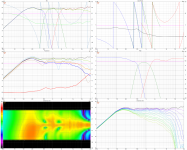
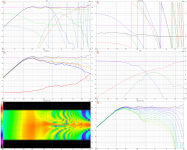

I used the vcad optimizer on the dsm50 XO and made a new one with LR slopes. I could not fit an LR4 and get things to look right so the slopes are pretty steep. This is mostly to see how bad the GD shifts can be.
I did not notice until after the fact that the SPL levels are all diff.. Either way, to date the md60n has the better pref. score and GD with the XO. Also, the DSM50 needed the woofer to be even further back to integrate than the md60n.
The dynaudio has an FS of 325hz. So maybe? It will just cost bucks to do. That steep LR8/LR6 xo I put in the last post could be done on the dynaudio.although I think 800Hz LR2 for a dome mid would be unrealistically low?
BTW I was looking at your LR2 XO image again. Do you ever sim with the driver spacing?
It is an investigation of what makes a driver sound unique. That drivers do have a sound is not argued against. The thread in which the study was posted had the familiar starting point of diaphragm material: “metal, plastic etc. have a sound”, no! The study showed that it is most likely not the property of material alone or another arcane source, but the sum of driver specific deviation in known and to a degree also controllable factors. It is possible to raise the objection here that a certain production method like paper pulp or metal cones induce a series of necessary design steps that would favor a certain pattern or type of variations that then “make” a sound. On the other hand, the study points to the possibility that a material x driver could be engineered that sounds more like a material y driver. This is because the sound of a driver can be described thoroughly with the known parameters that Jim listed, the study argues, it is just that not enough time and attention is spent on modeling accurately how a sum of smaller deviations build up to a sound. Hence, the model lacks complexity, which is possibly never developed in the first place because of wide shared beliefs which inhibit activity in this domain, such as that the sound of a driver is predominantly a property of, for example, material. In any way, it seems that with a proper description and model of known factors the sonic fingerprint of a driver can be described.So they removed the sound of the room in the way of the off-axis sounds plus changed the GD to match. That is a lot of slicing and dicing. So all drivers are the same if you remove all the things that make them unavoidably unique? I don't see what it proves other than we can manipulate drives into being similar on-axis? The problem is I hear the room and drivers perform differently off-axis.
Even the GD measurements I posted show many drives behave in a similar manner on-axis but once you go off-axis **** falls apart.
Thanks for explaining. I guess I did not see the "myth killer" benefit of it on my first read of the summary. (i could only find the german paper and cannot translate a pdf).It is an investigation of what makes a driver sound unique. That drivers do have a sound is not argued against. The thread in which the study was posted had the familiar starting point of diaphragm material: “metal, plastic etc. have a sound”, no! The study showed that it is most likely not the property of material alone or another arcane source, but the sum of driver specific deviation in known and to a degree also controllable factors. It is possible to raise the objection here that a certain production method like paper pulp or metal cones induce a series of necessary design steps that would favor a certain pattern or type of variations that then “make” a sound. On the other hand, the study points to the possibility that a material x driver could be engineered that sounds more like a material y driver. This is because the sound of a driver can be described thoroughly with the known parameters that Jim listed, the study argues, it is just that not enough time and attention is spent on modeling accurately how a sum of smaller deviations build up to a sound. Hence, the model lacks complexity, which is possibly never developed in the first place because of wide shared beliefs which inhibit activity in this domain, such as that the sound of a driver is predominantly a property of, for example, material. In any way, it seems that with a proper description and model of known factors the sonic fingerprint of a driver can be described.
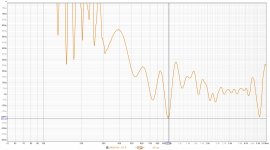
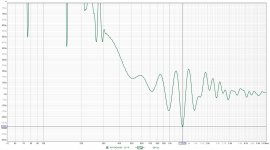
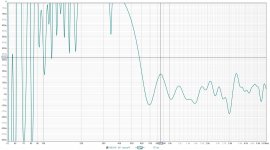
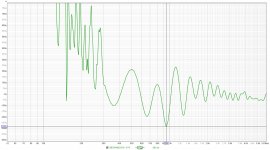
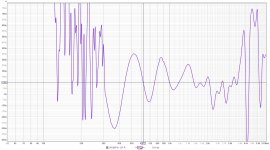
More GD graphs from dibirama's measurements. This time just whatever axis looked worse.
The satori WO24P looks like a perfect match for the dynaudio. Hmm.
The sb15NABC might get the award for the least change between the 0 and 30 degree GD,
I do wonder about some of the large GD shifts around 1khz. Low to high some are close to 0.5ms. The paper says no big deal for music sounds so I guess they are fine. I would prefer something tame and with not too many negative GD shifts. I did a test over the summer and think I heard how it can mess up a resonance.
Relative GD yes, absolute GD - that depends on the complexity and bandwidth of the sound. You will hear GD under 500 for sure on percussive instruments with long decay trails ie piano, bass etc. Thats why ported boxes sound "slow" compared to lower Qtc sealed and don't integrate well with subs.Although both curves should not be audible if I understand things right. Do we hear GD shifts below 500hz?
- Home
- Loudspeakers
- Multi-Way
- Headshake's far field 3way
